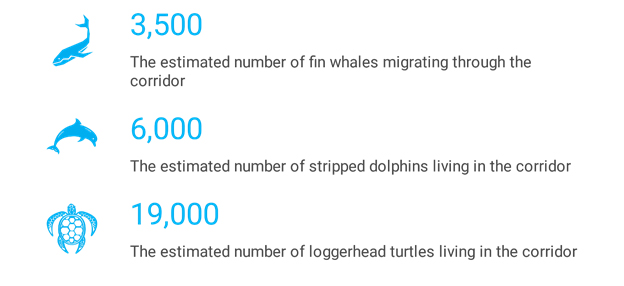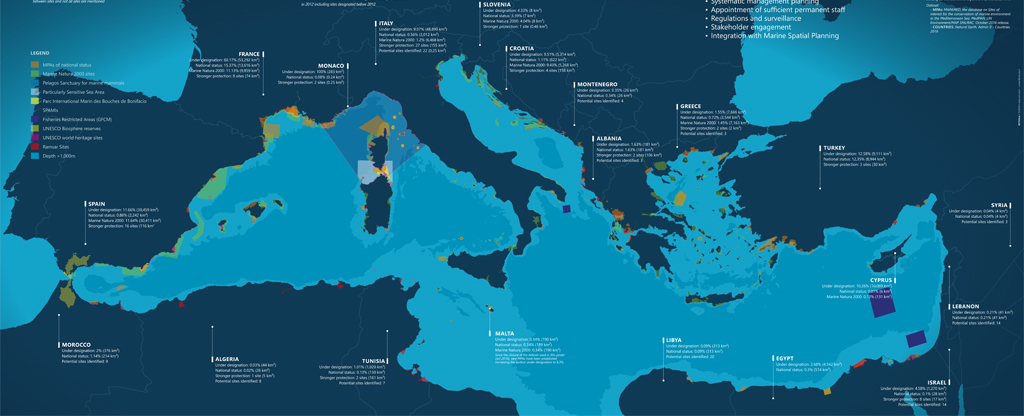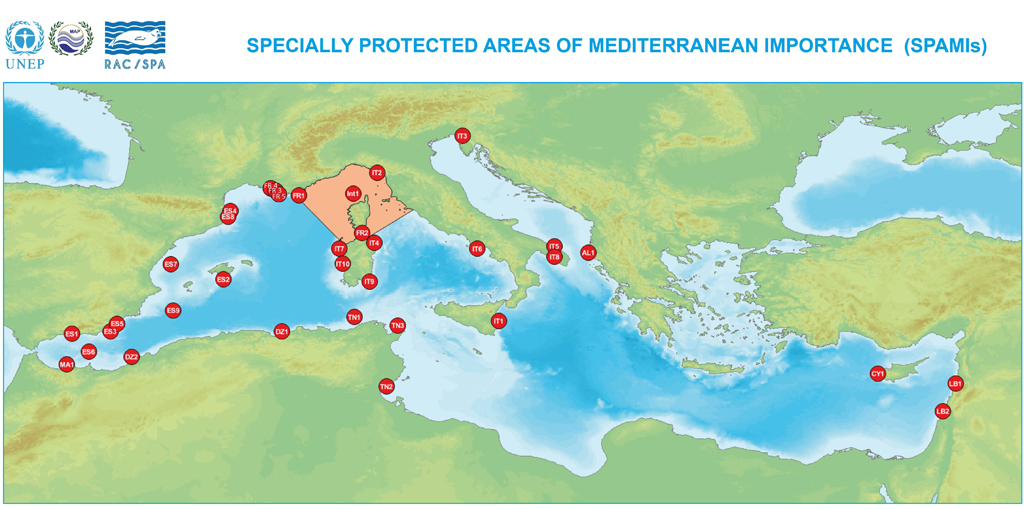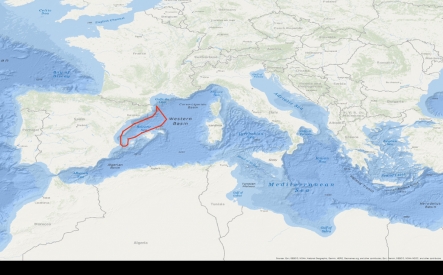Search
08/18: Key Development for the Barcelona Convention: The Mediterranean Cetacean Corridor becomes a Marine Protected Area
A 1.350 km long marine corridor, located off the Spanish Mediterranean coast, has been declared ‘Marine Protected Area’ by the Government of Spain in June 2018. The measure will benefit around 3,500 fin whales migrating through this strip of water, and more than 19,000 loggerhead turtles and 6,000 stripped dolphins
The cetacean corridor
This 46.385 km2 marine area is a migratory corridor used by many species of cetaceans in the western Mediterranean.

Biodiversity in the area is highand several species of cetaceans are present in very high densities, such as the Striped dolphin, the common dolphin, the bottlenose dolphin, the Risso dolphin, the long-finned pilot whale, the fin whale, and even sperm Whales.
It is especially used by the fin whale in its migration from breeding areas on the African coasts of Mediterranean, to the feeding areas in the Gulf of Leon and the Ligurian Sea.

10 marine mammals ranked as ‘threatened' in the corridor
The threat to marine life in the Mediterranean is a stark reality. A total of 10 marine mammals are ranked as ‘threatened' in this corridor, among which are the humpback whale and the stripped dolphin.
Until today, several human activities were posing a threat to these species, including fishing activity, maritime traffic and offshore oil and gas exploration and exploitation. With fishing activity come the risk of bycatch—the incidental capture of non-target species. Maritime traffic poses threats due to the noise pollution generated and to the risk of collisions. And offshore oil and gas exploration and exploitation can cause noise and vibrations which are harmful to the fauna.
Marine Protected Areas
When effectively managed, Marine Protected Areas are important mechanisms for safeguarding ocean life. The 2020 Sustainable Development Goal’s target is to conserve at least 10 per cent of coastal and marine areas. Spain has now exceeded this target. However, progress remain to be made at regional and global level. Today, protected areas cover only 8.9 per cent of the total Mediterranean area, and 5.3 per cent of the total global ocean area.

Click here to see a detailed map of the Mediterranean Marine Protected Areas in 2016
To address this challenge, MAP developed a roadmap to support efforts to create Marine Protected Areas in the Mediterranean. Within this roadmap, MAP provides support to Mediterranean Governments to identify new priority sites, to monitor the implementation of measures, to conduct effectiveness assessments and to generate synergies with other relevant human activity sectors, in particular fisheries and tourism.
Next step: inclusion on the SPAMI list
The corridor has been proposed for inclusion in the list of Specially Protected Areas of Mediterranean Importance (SPAMI List). The SPAMI list was created in the framework of the Barcelona Convention to promote cooperation in the management and conservation of natural areas, as well as in the protection of threatened species and their habitats.
Today, the SPAMI List includes 35 sites. If the corridor is included, it will become the second largest SPAMI, after the Pelagos Sanctuary.

“The Barcelona Convention Secretariat congratulates the Government of Spain, and looks forward to the formal inclusion of the corridor in the SPAMI List during the 21st ordinary meeting of the Contracting Parties to the Barcelona Convention (COP 21) in December 2019”, declared Gaetano Leone, UN Environment/MAP Coordinator.




Find Us On...